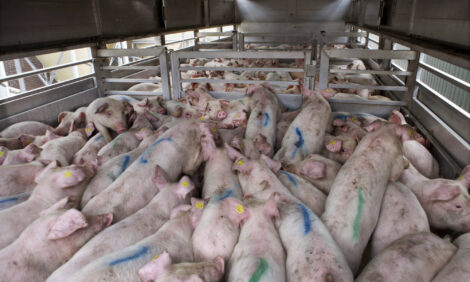



Farmgate Prices Better in UK Than Europe
SCOTLAND - Current market prices continue to favour the producer with the farmgate prices of cattle, sheep and pigs all well above year earlier levels.According to Stuart Ashworth, Head of Economics Services, Quality Meat Scotland, much of this can be attributed to the limited supplies available to sell as the number of cattle and new season lambs reaching abattoirs continues to trail compared with last year.
“However, supplies of prime pigs for slaughter across the UK have been running ahead of last year, by around 1 per cent over the past three months, so movement in pig prices points towards firm consumer demand for pig meat products,” Mr Ashworth said.
UK livestock prices are, however, behaving differently to those on mainland Europe, he observed.
“Prime pig prices across Europe have, for example, fallen about 3 per cent over the past month with all the major pig meat producing countries of Europe showing a decline in market prices.
“At current prices, European pig producers are getting market returns very similar to those of twelve months ago while UK producers are getting 10 per cent more. This makes imported pig meat more competitive on the UK market but there is little evidence yet of this affecting UK producer prices,” Mr Ashworth said.
Indeed over the first quarter of the year UK exports of pig meat and pig meat products increased by 7 per cent while imports fell 4 per cent , leaving the UK market tightly supplied.
European cattle prices are equally showing some weakness over the past month with the average male prime cattle price across Europe falling just over 1 per cent , although prices are around 4 per cent higher than twelve months ago.
“The main exceptions to this trend are the UK and Ireland which have shown price increases over the month. Other major beef producing countries like France, Spain and Germany report price declines over the past month but equally prices remain higher than last year.”
As with the pig meat sector the UK imported less beef over the first quarter of the year than it did last year while exports increased, particularly in January and February. Changes in import behaviour offer some support to retailer statements in respect of increased commitment to UK product, but in the beef sector will equally reflect the reduced consumer demand for frozen processed products and ready meals.
Across Europe the market that is performing the best from the producers’ perspective is the sheepmeat market.
“Following a poor start to the year, with averages well below year earlier levels, the average European Union lamb price has climbed steadily and now stands some 6 per cent better than 12 months ago.
“The main exception to this is Spain where, despite some modest improvement over the past quarter, prices are currently well below last year’s level for heavy lambs and similar to last year for light lambs. Similarly, Italy - despite a strong trade during Easter - reports current prices for light lambs which are lower than 12 months ago,” commented Mr Ashworth.
The challenges of a weak economy in Southern Europe are most apparent in the sheepmeat sector although Italy is also reporting pig meat prices lower than last year.
Equally, the countries with the most modest rise in beef prices are Spain and Italy, up less than 2 per cent on the year.
“This does not mean that there are not opportunities for our meat exporters, and indeed exports of our heavier lamb carcases to Italy have increased over the first quarter of the year. However, these Southern European markets will be more sensitive to price than Northern European markets,” added Mr Ashworth.







